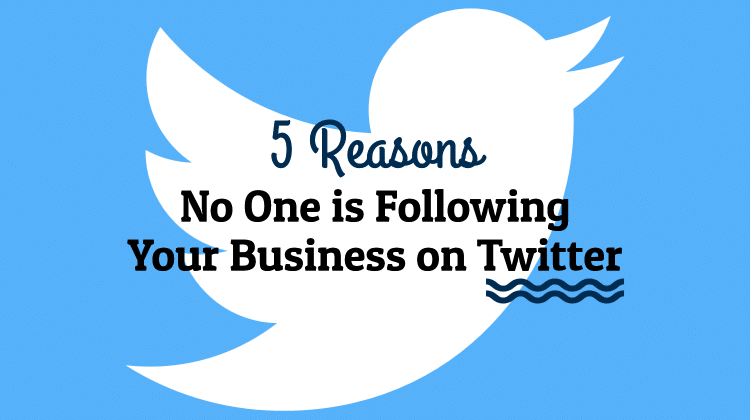
Almost one-quarter of adult internet users are on Twitter, so it makes sense to include this platform in your marketing plans. By using Twitter, businesses can build brand awareness, promote their content, and drive traffic to their websites. However, that only works if people are actually following you. If no one is following your company on Twitter, you won’t benefit much from using the platform.
So, where is everybody? Here are five reasons why no one is following your business on Twitter.
1. Your Account Seems Spammy
No one wants to follow a spammer, and if you’re not careful, it’s easy for your business’ Twitter feed to look spammy. You’re excited to share links to your latest blog posts and links to your offers, but if you never share anything else, people won’t want to follow you. Would you want to follow an account that only tweeted messages like “check out my blog,” even if that blog was great? No, and your customers don’t want to, either.
To avoid seeming spammy, don’t just share links to your own content. Instead, share your company’s content about 20% of the time. The other 80% of your posts should be interesting, shareable content that’s relevant to your audience. For example, you could tweet links to interesting news articles or retweet posts from influencers in your industry.
2. You Don’t Interact with Anyone
Many small businesses forget about the “social” part of social media. While you’re on social media to find more customers and grow your business, your customers are on social media to interact with other people and build relationships. If you don’t give them what they want, they have no reason to follow you.
A good place to start is with your Twitter mentions. When you see a customer has commented on one of your posts or has asked you a question, make sure to respond. You can also start conversations on your own to get your followers talking to you. For example, you could ask a question about your industry to start a conversation.
3.You Tweet Too Often
If you only have a few minutes a day to spend on your Twitter account, you may be tempted to share a lot of interesting posts at once. When you do that, your followers’ feeds will get overloaded with your posts, and if you drown out the other accounts they’re following, they may unfollow you.
To avoid annoying people with too-frequent posts, use a scheduling tool to spread out your posts throughout the day. You’ll still only need to spend a few minutes setting up posts for your account, but the tool will automatically post them at times you’ve specified.
4. You Don’t Tweet Enough
On the other side of the coin, there are some businesses that don’t tweet often enough. If you don’t tweet every day, or if you have long periods of inactivity when you get too busy, people may unfollow you. People don’t want to follow accounts that aren’t useful to them, and accounts that barely ever post aren’t useful. So how often should you tweet? The ideal posting frequency for businesses varies depending on your goals, but if you want to drive engagement, one to five posts per day is good.
Some businesses don’t post often because they don’t know what to talk about on Twitter. If that’s why you’re not posting often, try offering hints and tips for your audience, asking questions to start conversations, or tweeting behind-the-scenes pictures from your business. When in doubt, you can always retweet an interesting post that someone else wrote.
5. You Tweet at the Wrong Times
To get results, you need to tweet at times when your audience will see your posts. When you post at ideal times, a large portion of your audience will see your posts, and they may retweet them. Retweets give you added visibility and may translate to more followers. If you’re tweeting at odd hours when your audience isn’t around, people won’t see your posts, and they won’t get shared.
The best times to post will vary from business to business, but as a general rule, people check Twitter on their downtime, like their commutes and breaks. Try posting between noon and 3 p.m. between Monday and Friday, and between 5 and 6 p.m. on Wednesdays. Monitor your engagement, and if your audience isn’t responding to your tweets during these times, make adjustments as necessary.
Have you been making any of these mistakes? Don’t worry, since these mistakes are all fixable. Make some adjustments to your business’ Twitter strategy and you should see your follower count start growing in no time.

Great read, Jennifer – all really great points and I completely agree. I think a major issue with a lot of business’s Twitter accounts is that they don’t really understand their audience and what they actually want to read on Twitter. Or, they might actually be trying to target the wrong audience completely!
A lot of companies seem to think Twitter is just a conversion assisting channel and, while that can be true, it should still tie in seamlessly with the company objectives as a whole – social media should not be solely used as a publishing platform, as you said above.
Those are good points, Helen!
Hi great tips.Recently i have also started blogging on blogger. My site is hkgoodkh.blogspot.com. I also created twitter account for my blog.Was searching for ways to hook readers to my blog and twitter.Your site definitely helped me find solution.Thank you.